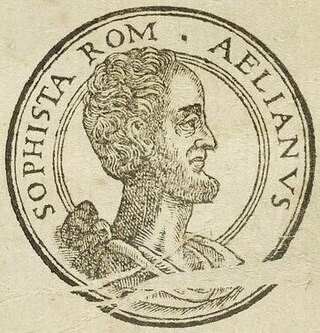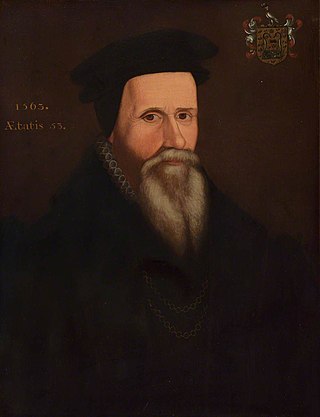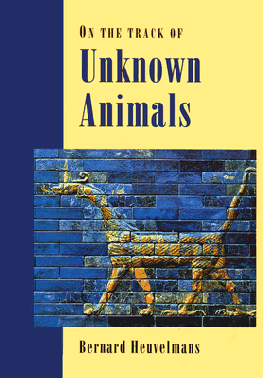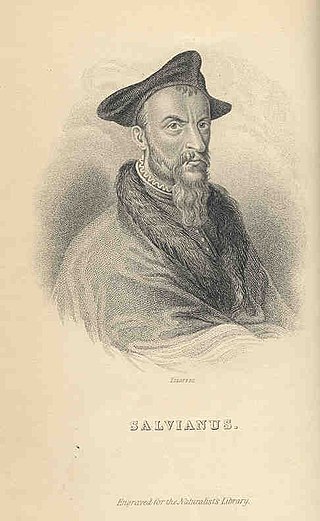
Cryptozoology is a pseudoscience and subculture that searches for and studies unknown, legendary, or extinct animals whose present existence is disputed or unsubstantiated, particularly those popular in folklore, such as Bigfoot, the Loch Ness Monster, Yeti, the chupacabra, the Jersey Devil, or the Mokele-mbembe. Cryptozoologists refer to these entities as cryptids, a term coined by the subculture. Because it does not follow the scientific method, cryptozoology is considered a pseudoscience by mainstream science: it is neither a branch of zoology nor of folklore studies. It was originally founded in the 1950s by zoologists Bernard Heuvelmans and Ivan T. Sanderson.

Claudius Aelianus, commonly Aelian, born at Praeneste, was a Roman author and teacher of rhetoric who flourished under Septimius Severus and probably outlived Elagabalus, who died in 222. He spoke Greek so fluently that he was called "honey-tongued" ; Roman-born, he preferred Greek authors, and wrote in a slightly archaizing Greek himself.

Conrad Gessner was a Swiss physician, naturalist, bibliographer, and philologist. Born into a poor family in Zürich, Switzerland, his father and teachers quickly realised his talents and supported him through university, where he studied classical languages, theology and medicine. He became Zürich's city physician, but was able to spend much of his time on collecting, research and writing. Gessner compiled monumental works on bibliography and zoology and was working on a major botanical text at the time of his death from plague at the age of 49. He is regarded as the father of modern scientific bibliography, zoology and botany. He was frequently the first to describe species of plants or animals in Europe, such as the tulip in 1559. A number of plants and animals have been named after him.

John Caius, also known as Johannes Caius and Ioannes Caius, was an English physician, and second founder of Gonville and Caius College, Cambridge.

Sea monsters are beings from folklore believed to dwell in the sea and are often imagined to be of immense size. Marine monsters can take many forms, including sea dragons, sea serpents, or tentacled beasts. They can be slimy and scaly and are often pictured threatening ships or spouting jets of water. The definition of a "monster" is subjective; further, some sea monsters may have been based on scientifically accepted creatures, such as whales and types of giant and colossal squid.

The Eurasian bullfinch, common bullfinch or bullfinch is a small passerine bird in the finch family, Fringillidae. In Anglophone Europe it is known simply as the bullfinch, as it is the original bird to bear the name bullfinch.

A merman, the male counterpart of the mythical female mermaid, is a legendary creature which is human from the waist up and fish-like from the waist down, but may assume normal human shape. Sometimes mermen are described as hideous and other times as handsome.

Bernard Heuvelmans was a Belgian-French scientist, explorer, researcher, and writer probably best known, along with Scottish-American biologist Ivan T. Sanderson, as a founding figure in the pseudoscience and subculture of cryptozoology. His 1958 book On the Track of Unknown Animals is often regarded as one of the most influential cryptozoology texts.

The sea monk was a sea creature found off the eastern coast of the Danish island of Zealand in 1546. It was described as a "fish" that outwardly resembled a human monk in his habit.

A Jenny Haniver is the carcass of a ray or a skate that has been modified by hand then dried, resulting in a mummified specimen intended to resemble a fanciful fictional creature, such as a demon or dragon. This practice dates back to the 16th century when these specimens were often sold as curiosities to sailors and collectors.

Samuel Bochart was a French Protestant biblical scholar, a student of Thomas Erpenius and the teacher of Pierre Daniel Huet. His two-volume Geographia Sacra seu Phaleg et Canaan exerted a profound influence on seventeenth-century Biblical exegesis.

On the Track of Unknown Animals is a cryptozoological book by the Belgian-French zoologist Bernard Heuvelmans that was first published in 1955 under the title Sur la Piste des Bêtes Ignorées. The English translation by Richard Garnett was published in 1958 with some updating by the author and with a foreword by Gerald Durrell. A revised and abridged edition was published in 1965, and a further edition in 1995. It is credited with introducing the term cryptozoology and established its author as the "Father of Cryptozoology."

In late Classical Greek art, ichthyocentaurs were centaurine sea beings with the upper body of a human, the lower anterior half and fore-legs of a horse, and the tailed half of a fish. The earliest example dates to the 2nd century B. C., among the friezes in the Pergamon Altar. There are further examples of Aphros and/or Bythos, the personifications of foam and abyss, respectively, depicted as ichthyocentaurs in mosaics and sculptures.

Historia animalium, published in Zurich in 1551–1558 and 1587, is an encyclopedic "inventory of renaissance zoology" by Conrad Gessner (1516–1565). Gessner was a medical doctor and professor at the Carolinum in Zürich, the precursor of the University of Zurich. The Historia animalium, after Aristotle's work of the same name, is the first modern zoological work that attempts to describe all the animals known, and the first bibliography of natural history writings. The five volumes of natural history of animals cover more than 4500 pages.

The kraken is a legendary sea monster of enormous size, etymologically akin to a squid or octopus, said to appear in the sea between Norway and Iceland. It is believed the legend of the Kraken may have originated from sightings of giant squid, which may grow to 12–15 m in length.

Scyllarides latus, the Mediterranean slipper lobster, is a species of slipper lobster found in the Mediterranean Sea and in the eastern Atlantic Ocean. It is edible and highly regarded as food, but is now rare over much of its range due to overfishing. Adults may grow to 1 foot (30 cm) long, are camouflaged, and have no claws. They are nocturnal, emerging from caves and other shelters during the night to feed on molluscs. As well as being eaten by humans, S. latus is also preyed upon by a variety of bony fish. Its closest relative is S. herklotsii, which occurs off the Atlantic coast of West Africa; other species of Scyllarides occur in the western Atlantic Ocean and the Indo-Pacific. The larvae and young animals are largely unknown.

Hippolito Salviani (1514–1572) was an Italian physician, scholar and naturalist, noted for his Renaissance book Aquatilium animalium historiae, depicting about hundred Mediterranean fish species, some from Illyria, and a few mollusks. He also wrote works on medicine, such as that dealing with Galen's theory of crises, and a topical play. Salviani taught at the University of Rome until 1568. From 1550 until 1555 he was chief physician to the House of Farnese and three successive popes, Pope Julius III, Pope Marcellus II and Pope Paul IV.
Alika Lindbergh, commonly known by her former name Monique Watteau, is a Belgian fantasy fiction writer and artist.

Aberystwyth Sea2shore Food Festival is an annual food festival held at Aberystwyth, Ceredigion over three days during October.

The Krüper is a German breed of creeper chicken. It originates in the former Duchy of Berg, now the Bergisches Land in western Germany, and is one of three chicken breeds from that area, the others being the Bergische Kräher and the Bergische Schlotterkamm. It belongs to the group of original European creeper breeds. The breed has normal-sized and bantam varieties.


















